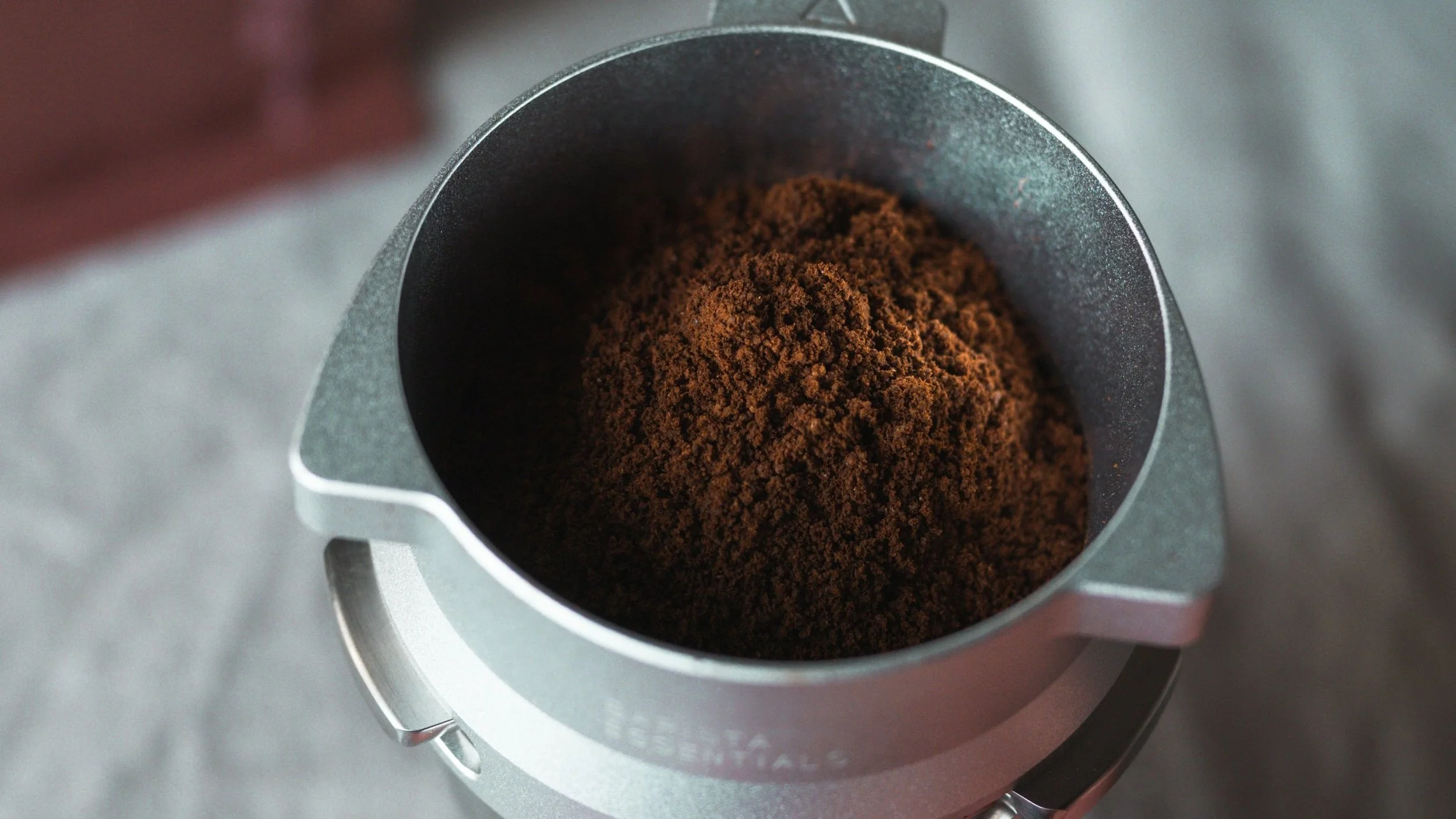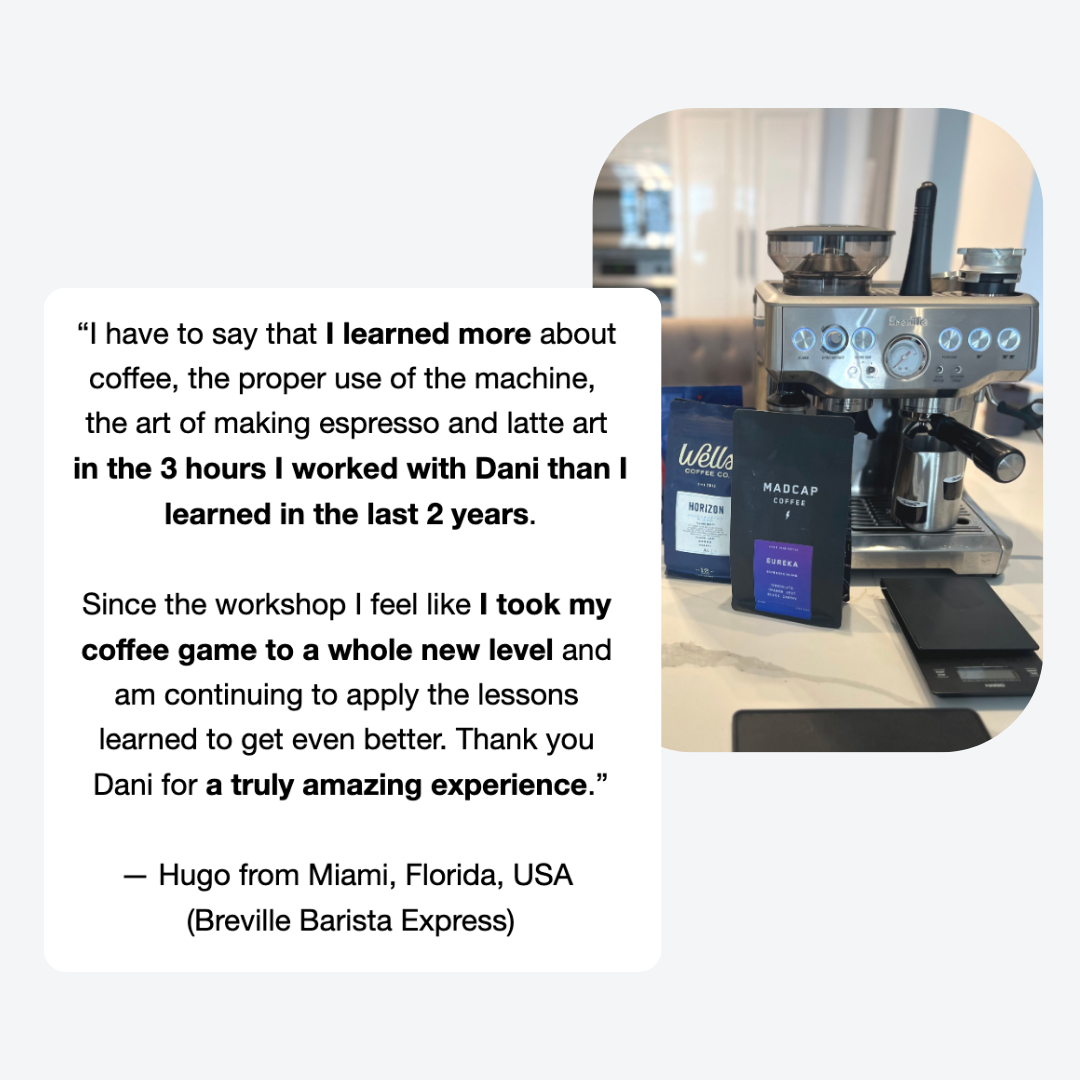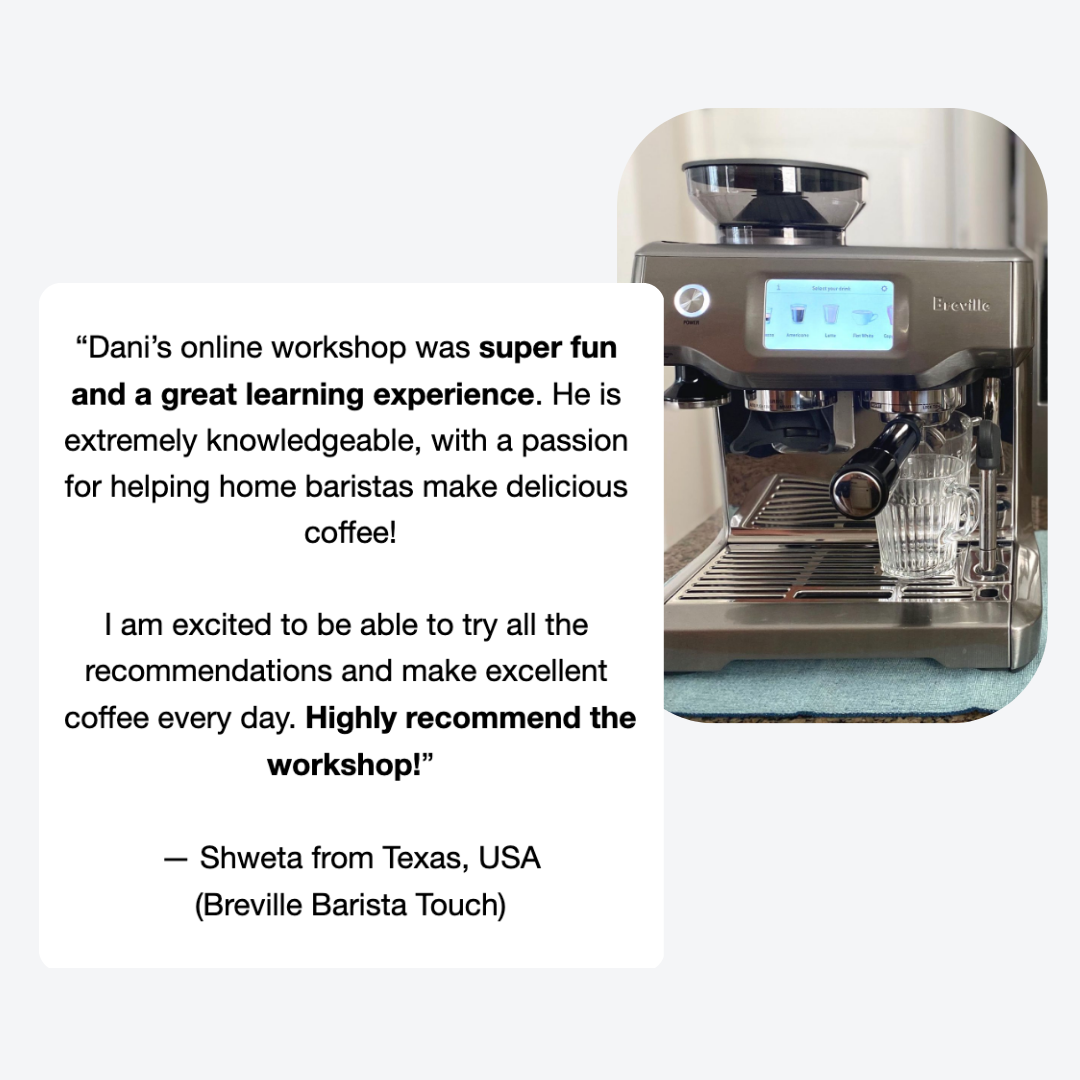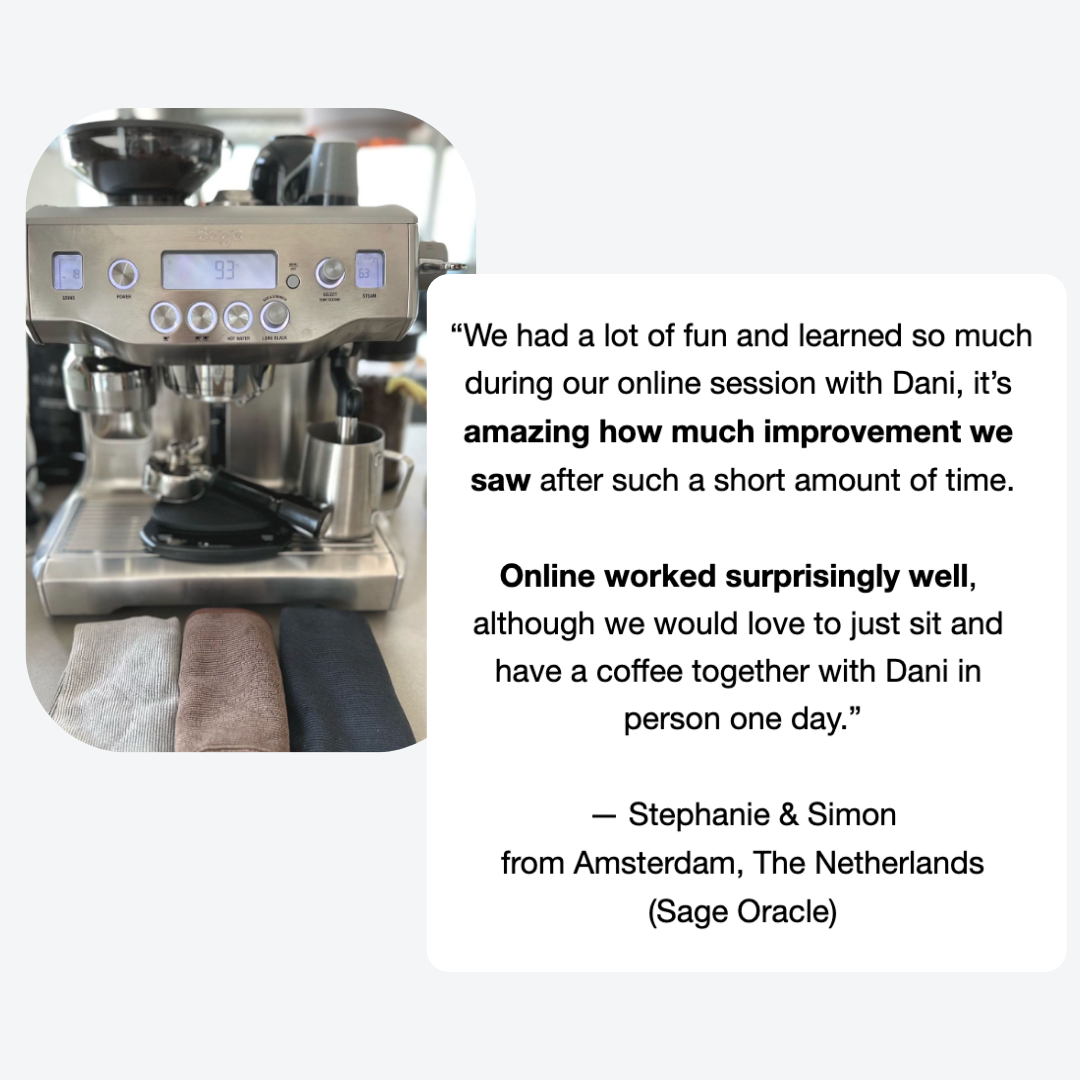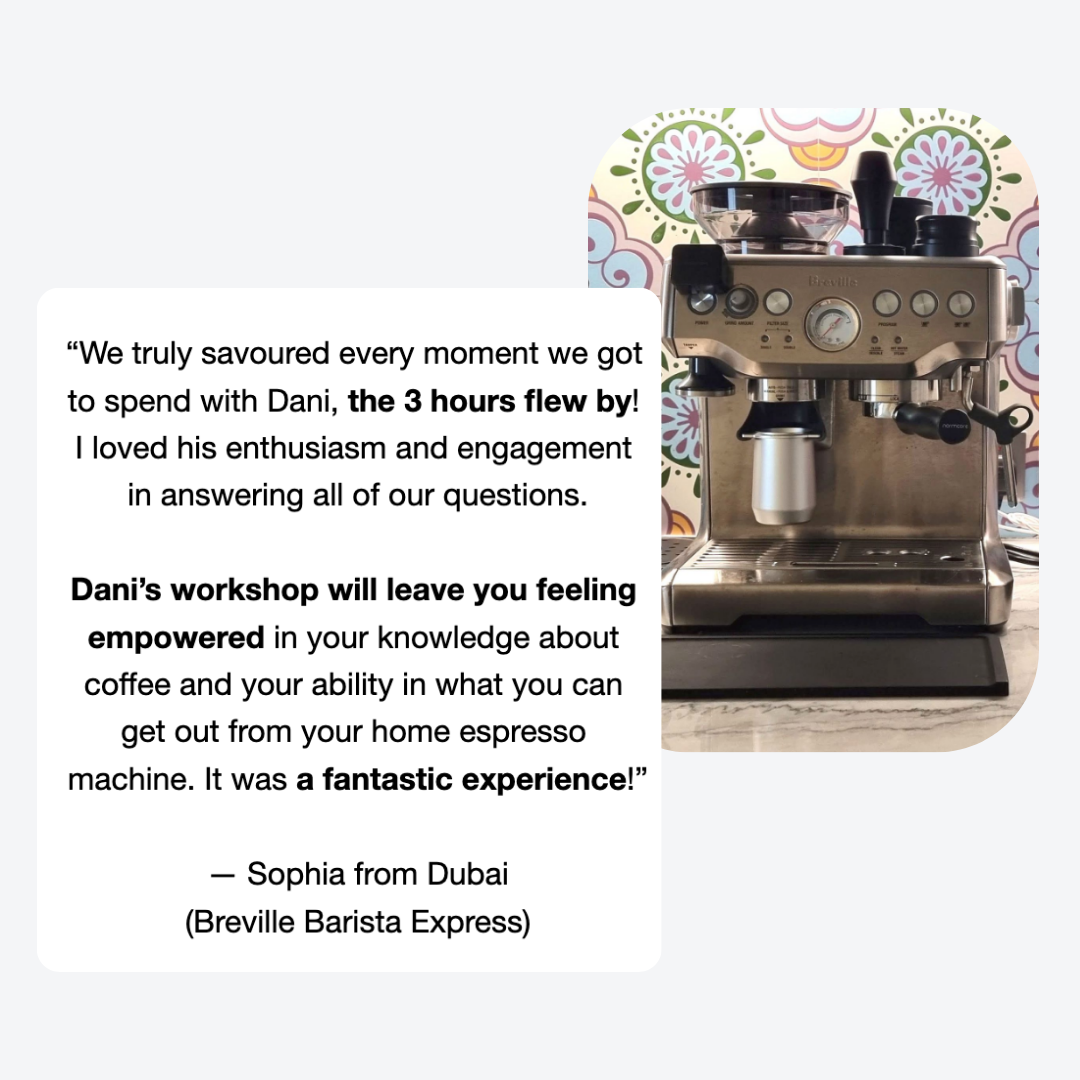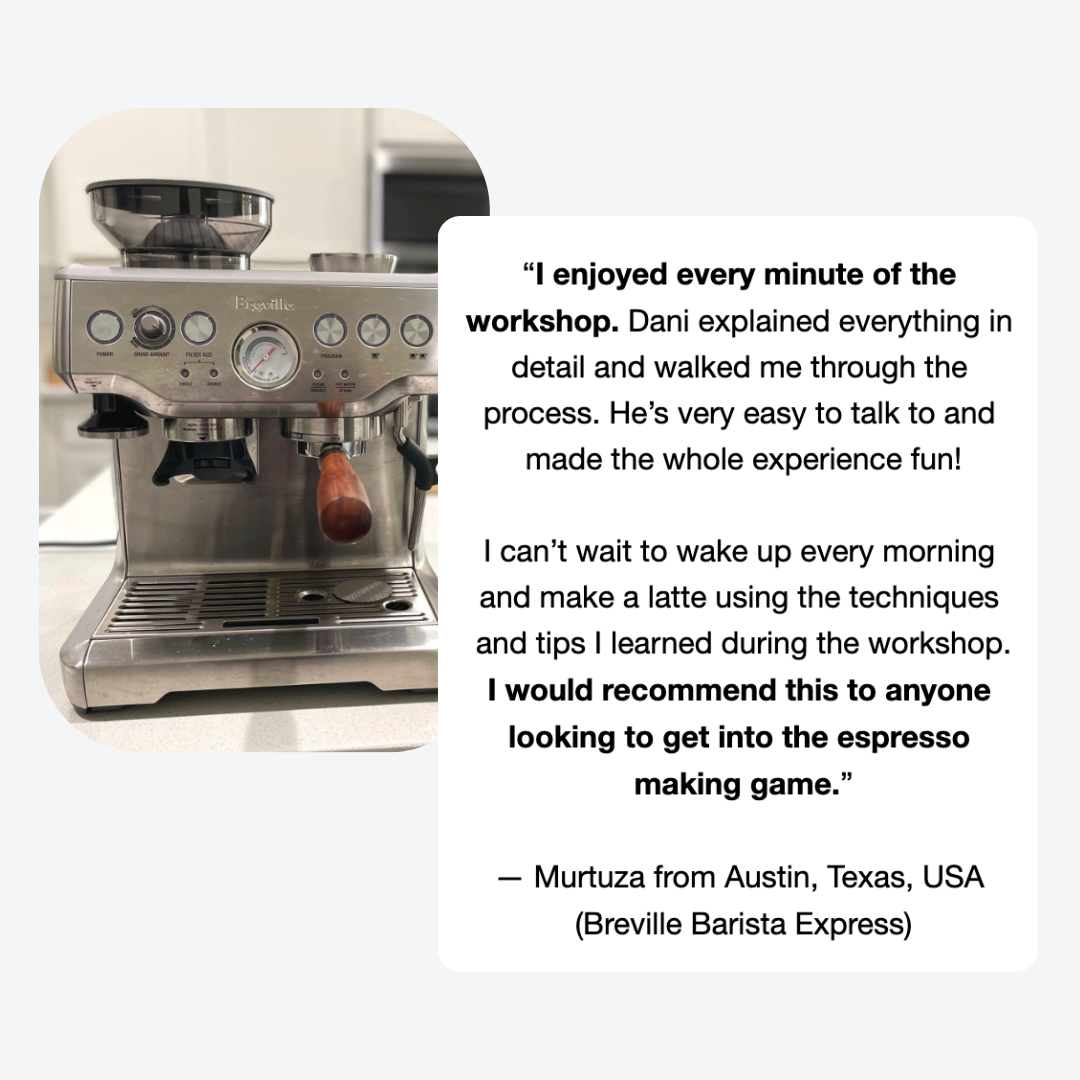Single dosing on a Sage or Breville home espresso machine with a built-in grinder
What does single dosing mean and why should you do it?
Single dosing or single-dose coffee grinding is a practice known mostly to home baristas who have a standalone coffee grinder. But, you can pre-weigh single doses of your coffee beans even when you make coffee on a home espresso machine with a built-in grinder.
What does single dosing mean?
Single dosing means that you keep your hopper empty and you weigh and grind each dose of coffee beans as you need it.
Why should you single dose?
Maintain the freshness of your coffee beans
Single dosing helps you to maintain the freshness of your coffee beans for longer. By grinding only what’s necessary, the coffee beans don’t get stuck in the hopper for days and turning stale. Instead, you can keep them in an airtight container.
Your coffee will turn out so much better when using fresh beans: nicer aroma, better crema, more vibrant flavours. This approach is particularly useful for home baristas preparing only a few shots of espresso a day.
Reduce waste
Single dosing also helps you to reduce waste by not having to purge the grinder in between grind size adjustments. This usually makes sure there’s no old coffee sitting in the chute and allows the new coffee to pass through the burrs.
Switch easier between different coffees
If you like to experiment with different coffees, then single dosing allows you to easily switch between different types of coffee beans. You won’t have to go through all the coffee beans sitting in your hopper or deal with the trouble of emptying it out every time you want to experiment with a different coffee.
Things to keep in mind when single dosing
Since the hopper is empty, which means there’s no coffee weight pushing down, you may have some coffee beans bounce around in the hopper once you start grinding (also known as “popcorn” effect), which can slightly impact the grind consistency. But, I think that’s a small sacrifice for the benefits you gain.
The above can be applied to all home espresso machines from the Sage and Breville range which feature a built-in grinder e.g. Barista Express, Barista Express Impress, Barista Pro, Barista Touch, Oracle and Oracle Touch.
I hope you find these tips helpful and, if you’d like to dive deeper, you may consider our espresso and latte art home barista workshops. Happy brewing!
P.S. Did you find this article helpful? Please consider supporting our work for just the price of a cup of coffee here. Thank you so much!
And, if you enjoyed reading this article, you might find the one here interesting too – What is the best grind size for the Sage and Breville home espresso machines with a built-in grinder?

